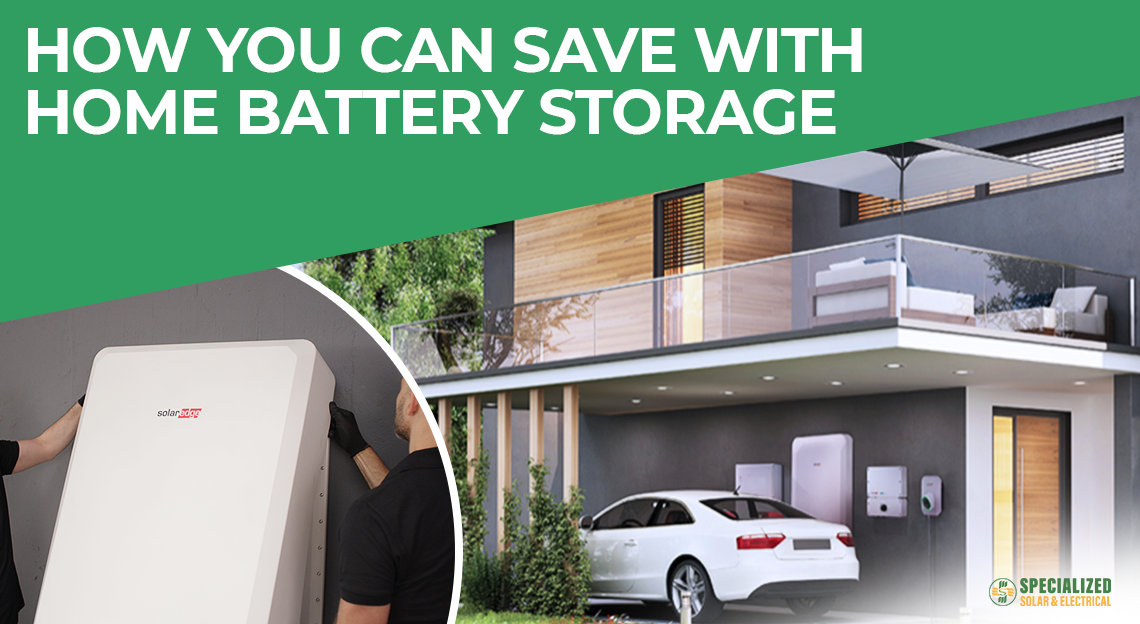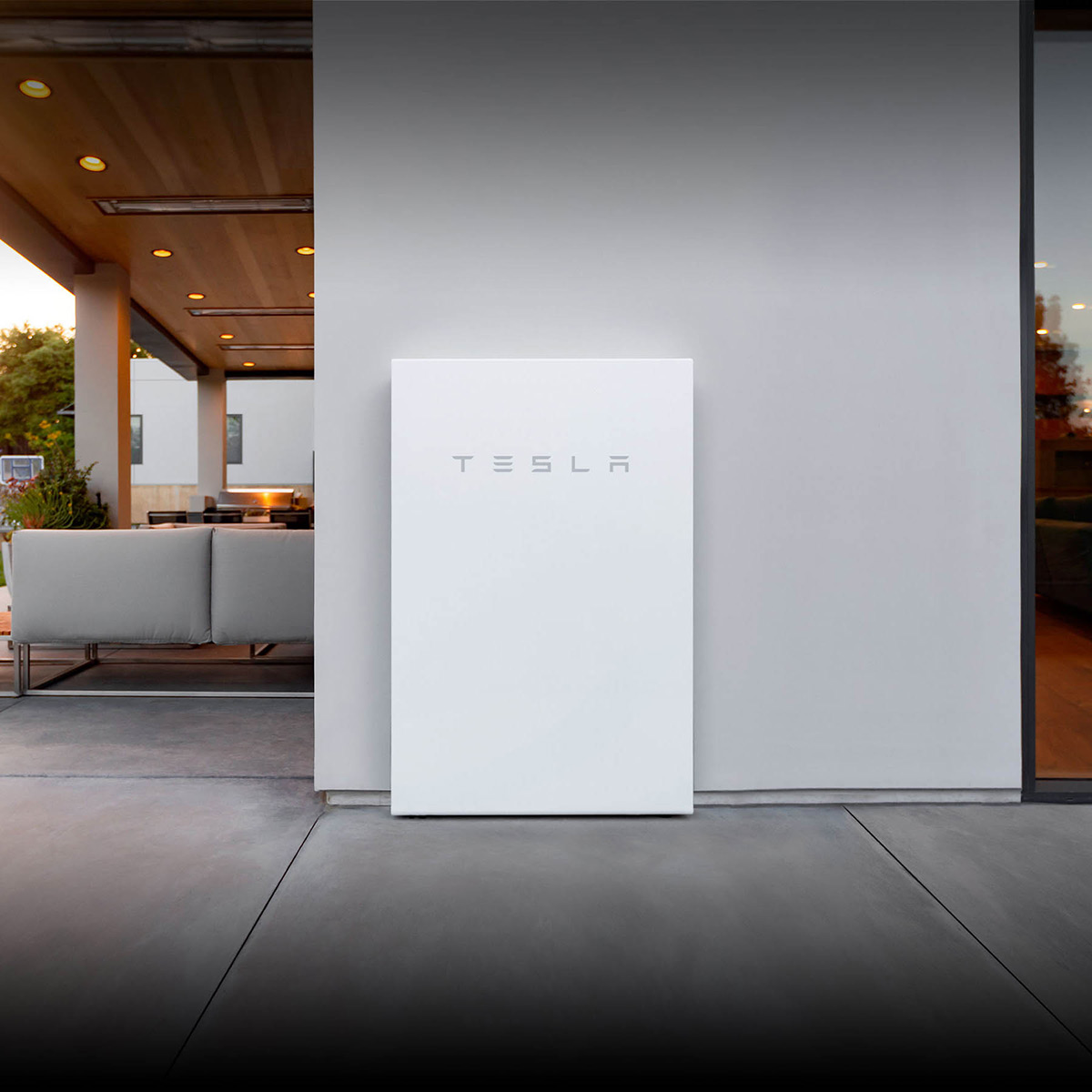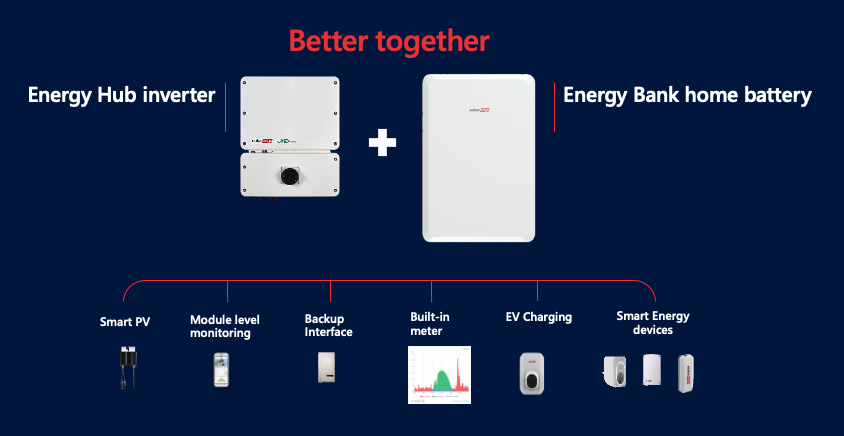Are you thinking about getting a solar battery? If so, you’ve probably wondered whether the savings from battery storage are worth the cost.
A quality grid-connect battery with 10 to 13 kilowatt hours of usable storage capacity will set you back around $10,000 to $15,000. Government battery rebates can reduce the upfront purchase price, but even with a rebate, a battery is still a big financial outlay.
So, is battery storage worth it in 2022?
There are many reasons why people invest in home battery storage; these include:
- Saving money on electricity
- Protection from rising electricity prices
- Greater energy independence
- Blackout protection
- Cutting CO2 emissions
This blog focuses on the savings aspects of home battery storage. There are two main categories of savings you can achieve with a solar battery:
- Electricity bill savings
- Other types of savings
The purpose of this blog is to provide you with the tools to work out the potential savings you could achieve with home battery storage.
Electricity bill savings with a home battery
Learn more about the Tesla Powerwall
The amount you can save on electricity by installing a battery depends on:
- How much electricity you use every day (on average)
- Times of day/night you use electricity
- Size of your solar battery
- Number of times your battery is charged and discharged every day
- How much you pay for grid electricity
- Whether you are allowed to send your surplus solar electricity to the grid in return for a feed-in tariff. If so, what rate you get for the solar feed-in tariff.
Let’s take each of these in turn.
How much electricity you use every day (on average)
The average Australian house uses around 18 kilowatt hours (kWh) of electricity every day. However, this varies widely between households – from 3 or 4 kilowatt hours a day for a single person house to 40+ kilowatt hours for a large family home with pool pumps, clothes dryer, underfloor heating etc.
To work out how much electricity you use, the starting point is your electricity bill. This shows the average number of kilowatt hours of electricity your house draws from the grid every day. If you calculate the average daily kilowatt hours across the last four quarters, you’ll get your average daily grid electricity usage for the last 12 months.
If you have solar panels on your home, you also need to work out how much of your solar electricity you consume in your home. This doesn’t show up on your electricity bill. That’s because your bill only shows what you buy from the grid and, if you have solar, how much you export to the grid.
To get accurate solar consumption data, you need a solar system that includes consumption monitoring. Whilst all modern solar power systems include solar generation monitoring, most don’t include consumption monitoring as standard. However, if you purchase a solar system from Specialized Solar, we include consumption monitoring with every installation.
If you don’t have consumption monitoring and you’d like a quick way to work it out (that’s an approximate), here it is:
- Multiple the capacity of your solar panel system by 3.6.For example, 5kW of solar panels x 3.6 = 18kWh.This is the amount of electricity your solar system generates on average day. (Note: 3.6. is the average number of peak sun producing hours for solar panel systems in Melbourne.)
- Take your average daily solar generation figure (i.e. 18kWh) and deduct the average daily kilowatt hours of solar electricity you export to the grid (which you can find on your bill).For example: 18kWh – 6kWh = 12kWhThe result (i.e., 12kWh) is your solar consumption figure – i.e. the amount of solar electricity you consume in your home.
- Add the result from step 2 (e.g., 12kWh) to your daily grid electricity usage (from your bills) and the result is your total daily electricity usage.
If you’d like help calculating your average daily electricity usage, get in touch.
Times of day/night you use electricity
If you are out at work during the day (and your children are at school etc), most of your electricity usage will be late afternoon and in the evening. In this situation, storing your excess solar electricity in a battery allows you to power your home for free in the evening.
However, if you work from home, care for young children or you are retired, you may be using a lot more electricity during the day. Battery storage can still save you money on electricity; it just depends on whether you have enough surplus solar electricity to charge a battery.
Free energy monitoring tools (funded by government energy efficiency programs) are available that give you an insight into the times of day when you use most electricity. If this is of interest, get in touch and we can arrange for one to be installed.
Size of your solar battery
Most household solar batteries are 10kWh to 14kWh in size (i.e., the amount of usable battery power).
So what size battery is right for your home?
Let’s take an example.
- Daytime electricity use – 8kWh
- Evening/night electricity use – 12kW
- Total electricity use – 20kWh
- Size of battery required for evening/night electricity use – at least 12kWh
In this example you’d need a battery that’s has at least 12kWh of usable storage capacity. To provide for your daytime usage and to power your battery, you’d need around 6kWh of solar panels.
Number of times your battery is charged and discharged every day
Typically, most households cycle their batteries once a day. However, if you are away for long periods, your battery won’t be charging and discharging on a daily basis. This means you won’t be saving as much as you could from having a battery.
On the other hand, some batteries are designed to cycle more than once a day without shortening the warranty period. If you can charge and discharge your battery more than once a day, you may be able to save more on electricity. However, to make this work you may need to install a bigger solar panel system to provide additional charging capacity.
How much you pay for grid electricity
The more you pay for grid electricity, the more you can save with solar and battery storage. That’s because using your free solar energy means you don’t have to buy electricity from the grid (which can be expensive). The average rate for grid electricity for Australian households is around 27 cents per kilowatt hour.
Whilst some industry experts predict an easing in electricity prices as more renewable energy is used in the electricity grid, it is possible that prices will rise due to inflation and an increase in electricity distribution costs. With solar battery storage, you protect yourself from future ‘bill shock’ should electricity prices rise. For anyone who wants to keep their ongoing household costs as low as possible, having that energy independence is a valuable benefit of battery storage.
Solar feed-in tariff
The actual amount you save by using power from your battery in your home is the difference between your grid electricity rate and what you could have earned by exporting your excess solar to the grid.
For example, if your grid electricity usage rate is 27 cents per kilowatt hour (kWh), and you get a solar feed-in tariff of 6.7 cents per kWh, the savings from using battery power in your home is the difference, i.e.,
27 cents/kWh – 6.7cents/kWh = 20.3 cents/kWh (savings from battery storage)
What this means is the lower the solar feed-in tariff, the greater the savings from battery storage.
Of course, this assumes that you are entitled to receive the solar feed-in tariff. If you have been told by your network distributor that you are not allowed to export solar electricity to the grid (due to grid constraint issues), the financial benefit of battery storage is even greater. For example:
27 cents/kWh (grid electricity rate) – 0 cents/kWh (solar feed-in) = 27 cents/kWh (savings from battery storage)
Other types of savings
In addition to saving money on your electricity bill, there are other financial benefits that owning a battery can offer:
- Income generation – earning credits on your electricity bill by joining a Virtual Power Plant Program.
- Enhanced savings – by using your stored solar energy to charge your electric vehicle or power a hot water heat pump system.
- Avoiding costs associated with loss of electricity caused by a power outage – such as food in your fridge/freezer going off, loss of income if you work from home, water pumps not working (relevant if you aren’t on town water and don’t have a generator).
Finally, there are benefits relating to health, safety, and security of having a guaranteed source of power for your home. For example, guaranteed lighting in the event of a blackout or a security system that continues to work, no matter what.
The value you place on these benefits may well far greater than the electricity bill savings from solar battery storage. And it may be these ‘softer benefits’ that tip the balance in favour of a decision to buy a battery for your home sooner, rather than later.
Learn more about SolarEdge’s Energy Solutions
Would you like to know more?
If you’d like to know the costs and savings of battery storage for your home, get in touch. We can calculate your daily electricity usage, work out how much daytime electricity you use, what size battery would be best for your home – and from there we can produce a customised quotation showing the costs and savings.
We can also advise on the rebates you may be eligible for and other opportunities for battery owners such as joining a government-supported Virtual Power Plant Programs.














